The new Royal College of Art (RCA) buildings in Battersea, just south of the Thames in London, are a quiet rebuke to the gargantuas designed by a previous generation of architects. Looking out from the fourth-floor balcony of Herzog & de Meuron’s new studio building, you do not find a view of the river. Instead, all you can see when peering over the top of the pre-existing RCA campus is the vast rump of the luxury apartment block that Foster + Partners built next to its own riverfront headquarters—both buildings that helped make the banks along this segment of the Thames an architectural free-for-all of bloated glass-fronted luxury.
South London is not without hope, though. Herzog & de Meuron’s two new RCA buildings are not small, together providing 181,275 square feet of workshop, studio, and research space. Representing the biggest expansion in the 190-year history of one of Britain’s leading educational institutions, this latest addition is far larger than the school’s other two campuses across the river in North London. As a pair, the studio building and the research building adjoining it demonstrate the compatibility of modernist architectural nuance with a walkable street pattern and older neighboring structures. London has again been improved immeasurably by the work of the Swiss practice—designers of the Tate Modern (2000) and its extension (2016)—that has absorbed the city’s material culture and added to it so ingeniously.
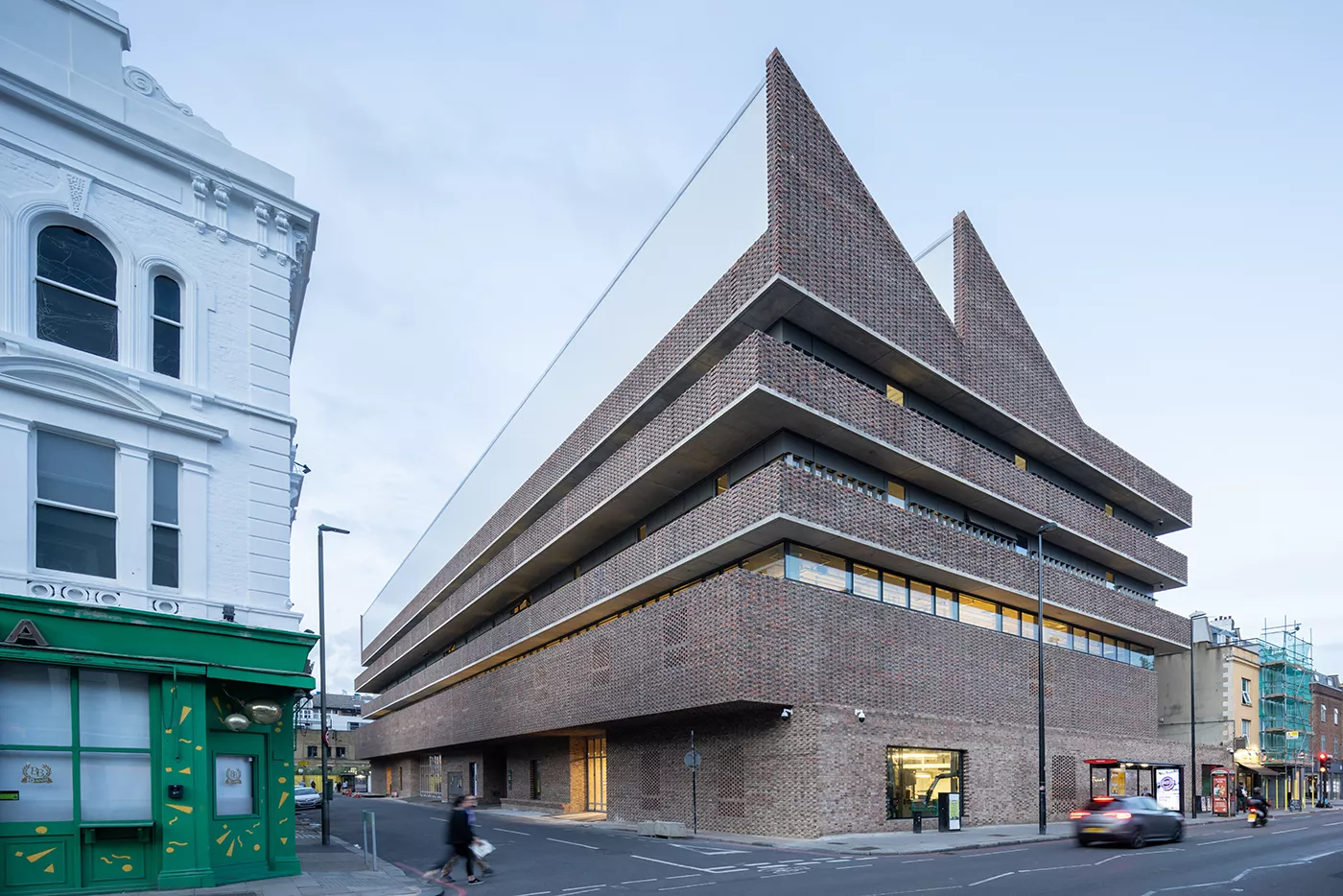
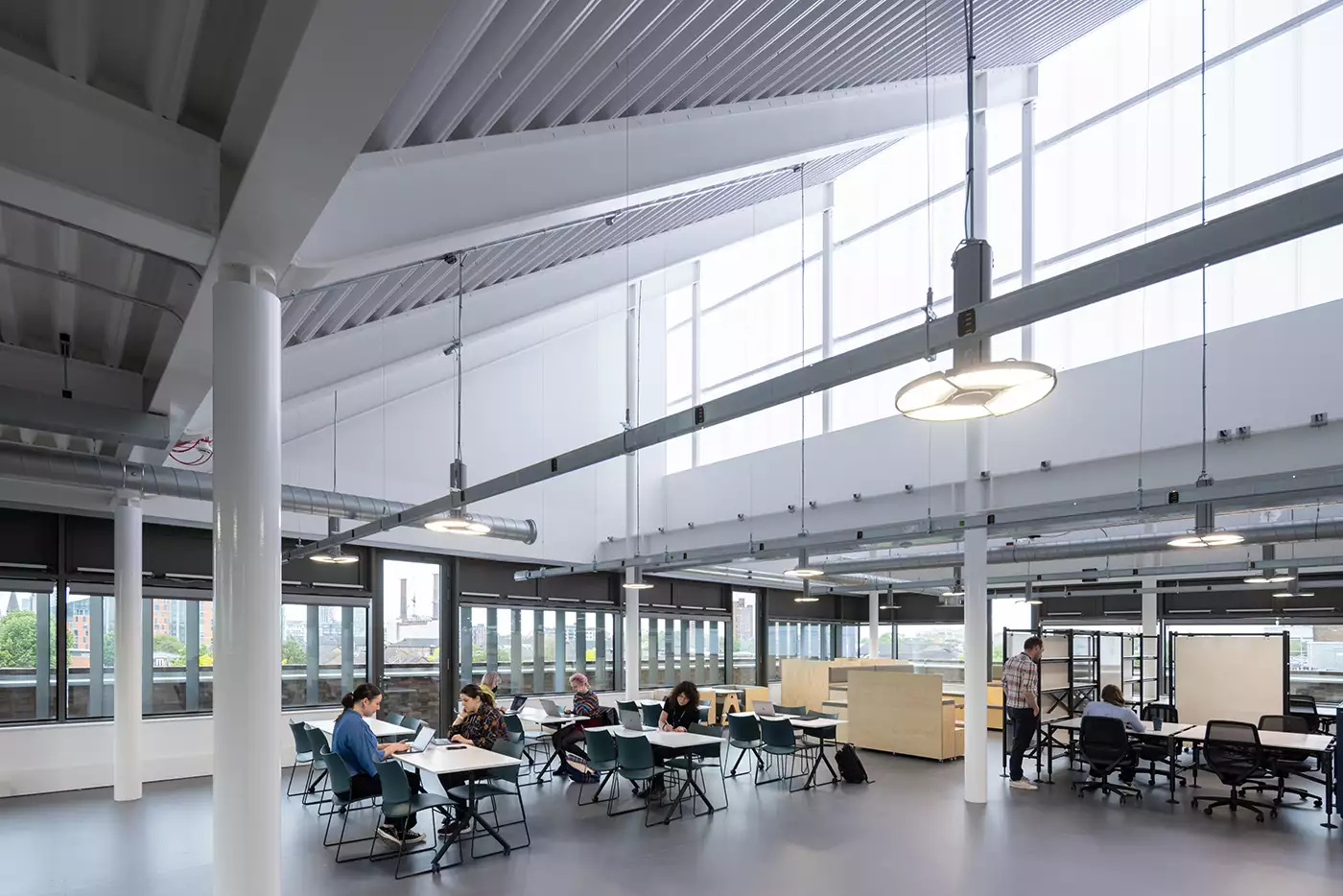
Herzog & de Meuron's studio building at the Royal College of Art. Photos © Iwan Baan
The four-story brick-clad studio building—which runs the length of one block and is dominated by three staggered brick balconies on a plinth—is a straightforward success. It is not fussy or overly clever but, instead, is spatially generous and enriched by small details that give this tough structure coherence and humanity. On the ground floor, entrances on the north and south sides provide multiple access points, enabling students to pass through the building on their way to the rest of the campus. Inside, its heart is a 3,800-square-foot double-height space with a burnished asphalt floor, called “the hangar.” Bookended by enormous garage doors, the hangar can be opened up to the public and, in so doing, completely reinstate the severed Radstock Road.
The building is not structurally sophisticated: it has a narrow concrete core and is supported on its flanks by concrete-filled steel columns that enable a relatively uninterrupted floor plate. The workshops are located on the ground floor, with windows to the east (facing the busy Battersea Bridge Road), giving passersby tantalizing glimpses of students using industrial equipment. Sculpture students, who occupy the floor above, said they “didn’t want to be in a goldfish bowl,” so this level has a ring of clerestories and several windows that are shaded by a brick trellis. The top two floors, which house fine art and design, are more extensively glazed.
Within these studios, the impact of the brick is subtly felt. The material evokes all manner of London structures, particularly the older apartment buildings, prevalent throughout the city, with units that are accessed from exterior walkways. The balconies serve multiple functions, providing not just social space but full circulation around the studios. Also important: the balustrades provide a sunscreen for the students working at the desks closest to the windows.
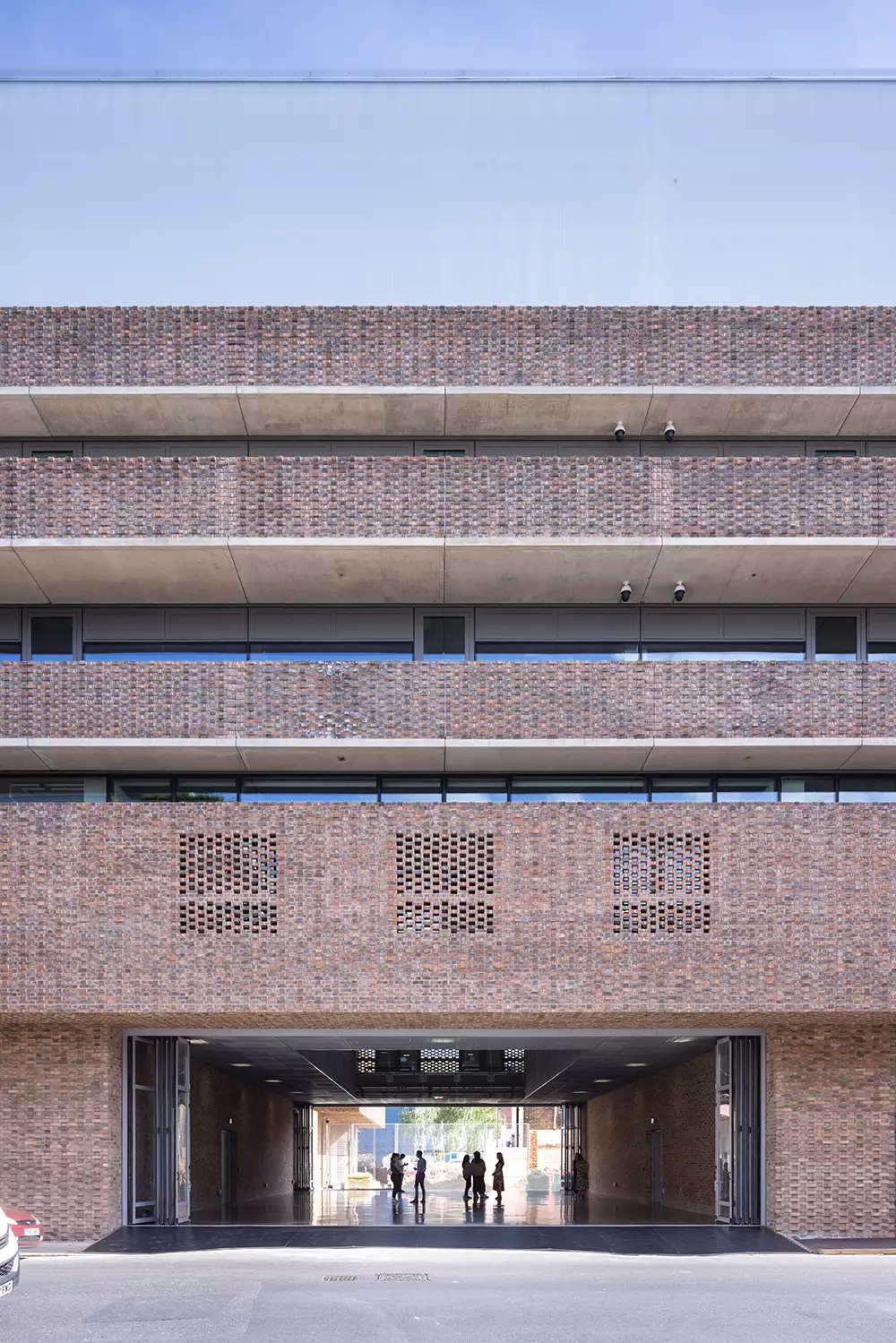
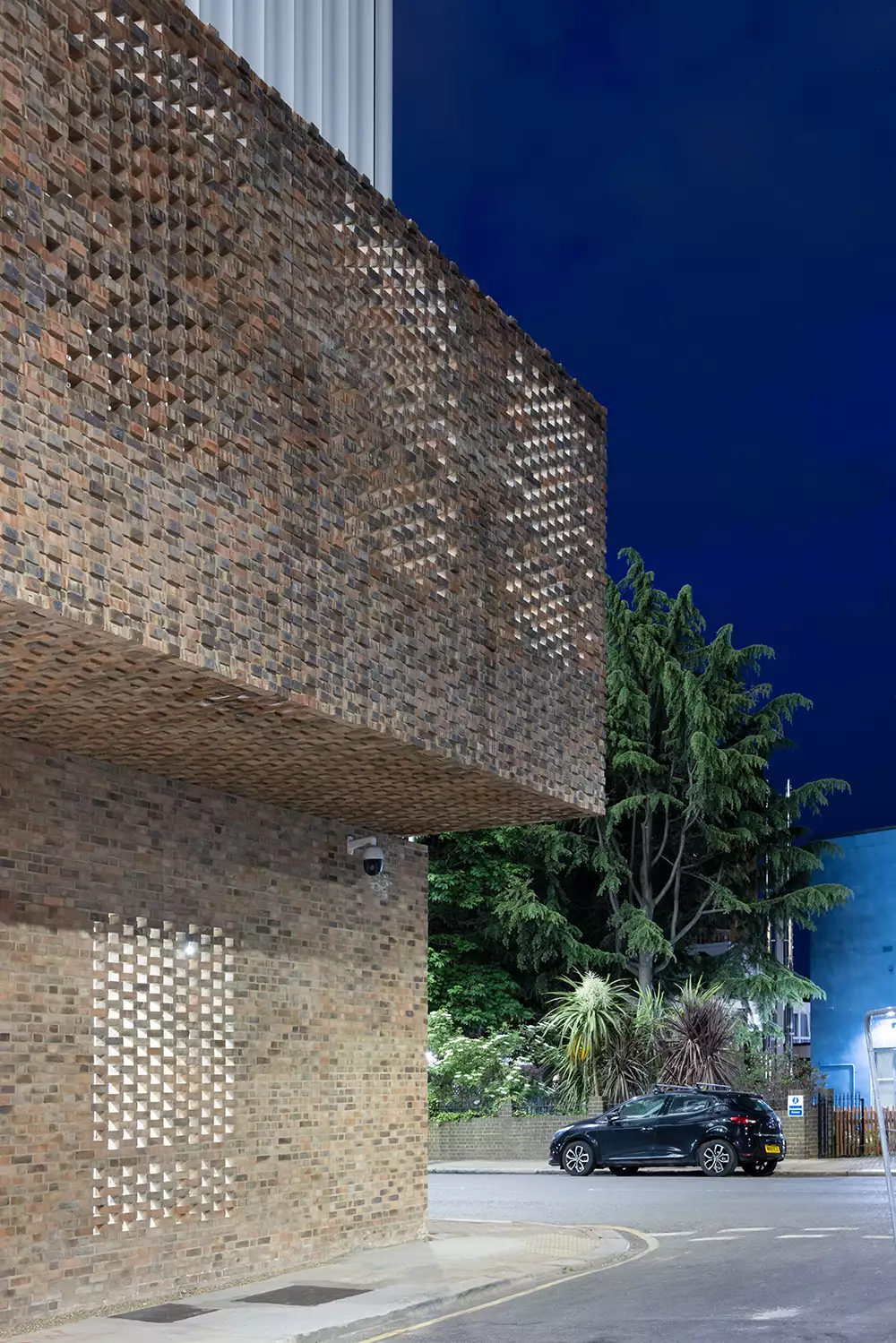
The studio building at the Royal College of Art. Photos © Iwan Baan
The bond that the designers used for the masonry is quirky and clever too, and offers a lesson in how the most simple material can be manipulated to create delight or intrigue—not so much what the brick “wants to be” but how the brick can be fun: the wall’s headers are all pulled outward, creating an undulating effect on the inside of the balcony that provides an extra layer of visual interest for the students, who will look at it daily. The treatment also provides the right kind of rough exterior for a street that was once lined with garages. What Herzog & de Meuron have done in detail is the same subtle game of push and pull that they have played with the volume of the building, at a bigger scale. The central balcony protrudes to the west and is recessed to the east. The hangar space is effectively created by extending the street into the building. It’s a lesson for any student.
More tricky, though, is the research building, which is integral to the RCA’s mission. Since its founding, in the 1830s, the RCA has always been home to innovative design, particularly when it was included in Prince Albert’s mission to raise standards in British industry, from the 1850s onwards. The new building seeks to continue that legacy.
The square-plan eight-story research building is clearly distinguished from the adjacent brick studio structure by its greater height and the recycled aluminum fins adorning its four facades, designed both to shade the interior and to aid its natural ventilation system. From a distance, the fins give the building both presence and texture in the cityscape, but up close they are slightly disappointing. The aluminum is thin, lacking the heft of the brickwork on the studio building, to which it is connected via an elevated terrace.
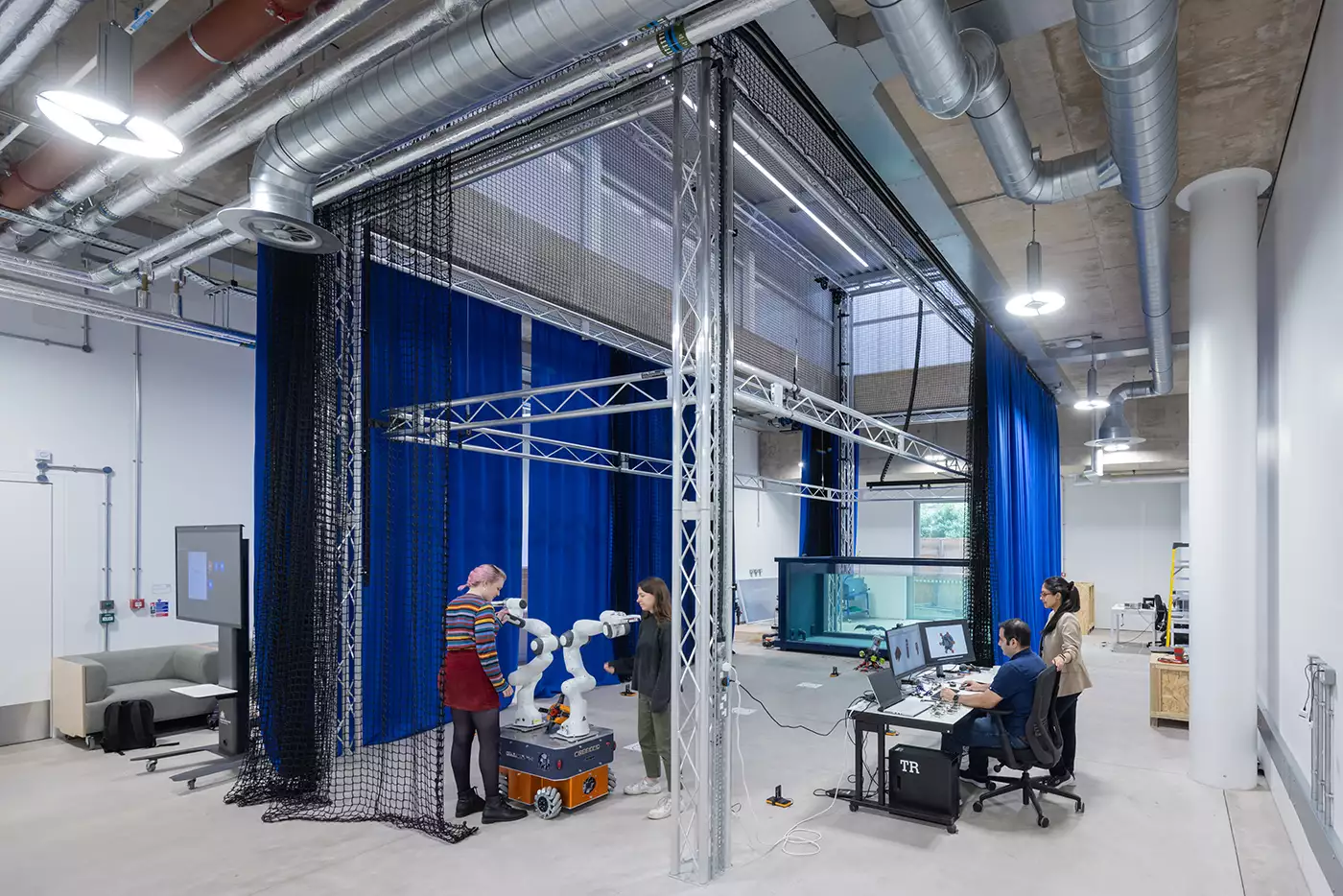
A robotics facility on the new campus. Photo © Iwan Baan
The research building is also, sadly, a more introspective building than its counterpart. The robotics studio is on the ground floor, ensuring that equipment doesn’t have to be carted upstairs—but it is closed off, which deprives the rest of the building of the drama of watching humans work alongside moving robots. After all, the long open spaces in the studio building, which are only partially divided, provide a theater of creativity that is a key part of the art school. It is a shame this has not been carried through, although perhaps understandable given the proprietary nature of some of the work. The research space is generally attractive and spacious; on the fourth floor, open start-up offices ring the central elevator core and communal kitchen, all of which is bathed in natural light.
Taken together, the new buildings are a success—although, at $170 million (for a higher-education building in the United Kingdom), a relatively expensive one. And, at the institutional level, the building’s effect is invaluable. Despite the school’s having three separate campuses, no real master plan was followed in developing them. Herzog & de Meuron’s project has created cohesion across the school’s disparate parts. It has also improved the Battersea campus and the surrounding neighborhood immeasurably.
Credits
Architect:
Herzog & de Meuron — Jacques Herzog, Pierre de Meuron, Ascan Mergenthaler (partners in charge); John O’Mara (associate/ project director); Giuseppe Giacoppo (project manager); Carmo Montalvão (project architect); Stuart Hill (operation manager)
Consultants:
The Planning Lab (planning); Mott MacDonald (structural, services, cost); David Bonnett Associates (inclusive design)
General Contractor:
Kier Group
Client:
Royal College of Art
Size:
181,275 square feet
Cost:
$170 million
Completion Date:
August 2021
Sources
Masonry:
Ibstock Brick
Concrete:
Byrne Bros.
Metal Grille:
Lang + Fulton
Elevators:
Kone








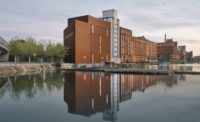
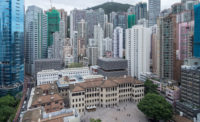
Post a comment to this article
Report Abusive Comment